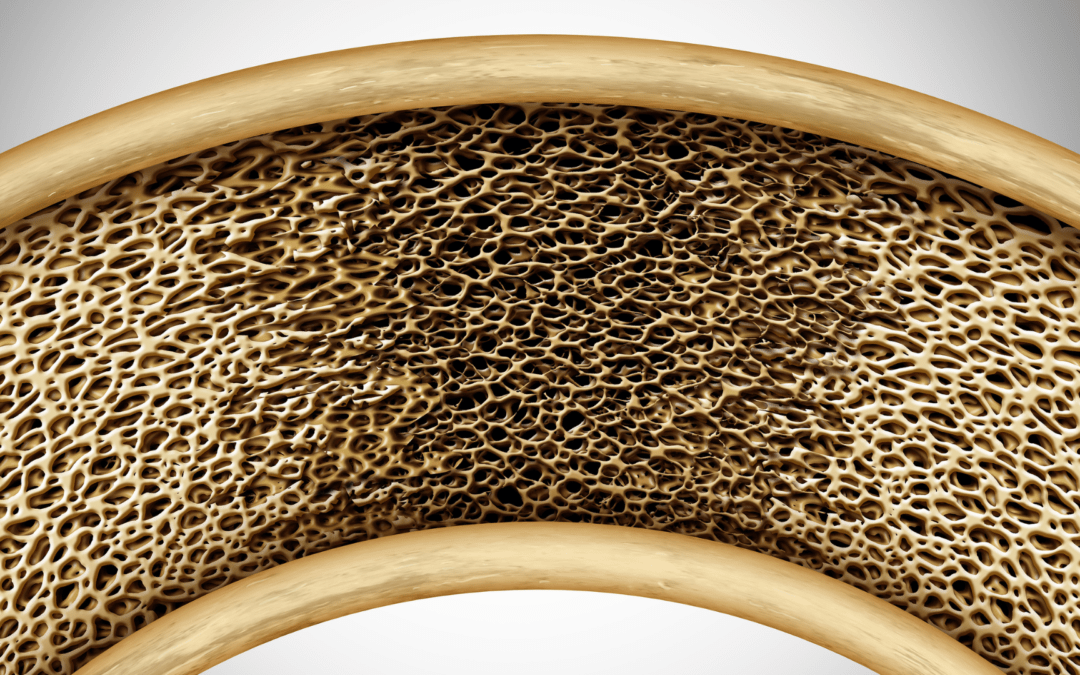When you think about menopause, you probably think about hot flashes, night sweats, or mood swings.
What you don’t feel happening? Bone loss.
You could be losing significant bone mass right now without a single sign. No pain. No warning. No obvious symptoms.
And the truth is, this bone loss often starts during perimenopause—years before menopause officially begins.
If you don’t catch it early, you might not realize anything’s wrong until something scary happens—like breaking a wrist stepping off a curb or fracturing a hip during a minor fall.
Bone health isn’t just about aging. It’s about invisible shifts happening quietly inside your body—and you have far more power to protect yourself than you might think.
Let’s walk through exactly how estrogen affects your bones, what’s happening during menopause, and how you can take action today.
How Estrogen Protects Your Bones
Estrogen isn’t just about periods and pregnancy. It’s one of your body’s main defenders when it comes to keeping bones dense, flexible, and resilient.
Here’s how it works:
-
- It slows bone breakdown, a natural part of aging.
- It boosts new bone formation to replace old tissue.
- It keeps the scaffolding inside your bones strong.
A study published in the New England Journal of Medicine found that postmenopausal women who underwent estrogen therapy for seven or more years had significantly higher bone mineral density compared to those who did not receive estrogen therapy.
Without enough estrogen, your body starts breaking down bone faster than it can rebuild. Over time, this can leave bones fragile and prone to fractures.
What Happens During Perimenopause and Menopause
-
- During perimenopause (the years leading up to menopause), estrogen levels fluctuate wildly. This unpredictability already starts thinning bones.
- Once menopause hits (12 months without a period), estrogen levels permanently plummet—and the rate of bone loss sharply increases.
According to the National Council on Aging, most women can lose up to 20% of their bone density within 5 to 7 years after menopause – often with no symptoms at all. Because bones don’t have nerve endings, you won’t feel it happening until something breaks.
Busting Common Myths About Bone Loss
-
- “I’m too young to worry about osteoporosis.”
➔ If you’re over 40, bone loss could already be starting—even if your periods are regular. - “I feel fine, so my bones must be fine.”
➔ Bone loss is called a “silent disease” for a reason. It’s painless until it’s advanced.
- “I’m too young to worry about osteoporosis.”
“Only thin, fragile women get osteoporosis.”
➔ All body types can be affected, though smaller-framed women do face higher risk.
How to Build Stronger Bones (at Any Stage)
You don’t need extreme measures—you need smart, steady habits.
1. Strength and Weight-Bearing Exercise
Examples for Different Levels:
-
- Beginners: Bodyweight squats, wall push-ups, light dumbbell curls
- Intermediate: Lunges, resistance band rows, overhead dumbbell presses
- Advanced: Deadlifts, weighted squats, pull-ups
Also include weight-bearing aerobic exercise like:
-
- Walking briskly
- Hiking
- Dancing
- Low-impact aerobics
💡 Fun fact: Activities like Zumba or ballroom dancing help strengthen bones and improve balance, reducing fall risk.
2. Smart Nutrition for Stronger Bones
Getting calcium and vitamin D is crucial—but dairy isn’t your only option.
Calcium-rich foods include:
-
- Leafy greens (kale, collard greens, spinach)
- Fortified plant-based milks (almond, soy, oat)
- Tofu made with calcium sulfate
- Sardines (with bones!)
- Almonds
- Yogurt and cheese
Vitamin D sources:
-
- Fatty fish (salmon, tuna)
- Fortified cereals
- Egg yolks
- Sensible sun exposure
💡 Consider supplements if you can’t meet daily needs through food alone (1,200 mg calcium, 800–1,000 IU vitamin D).
3. Lifestyle Habits That Matter
-
- Quit smoking – It speeds up bone loss.
- Limit alcohol – More than 1–2 drinks per day can harm bone health.
4. Get Checked: DEXA Scans Are Your Friend
A DEXA scan is a simple, painless test that measures bone density.
Think of it like a “selfie for your bones”—quick, easy, and incredibly valuable.
Ask your healthcare provider about your personal timeline for screening, especially if you’re over 50 or have other risk factors.
Should You Consider Hormone Replacement Therapy (HRT)?
HRT isn’t a “one-size-fits-all” decision, but it’s worth understanding.
Types of HRT include:
-
- Estrogen-only therapy (for women without a uterus)
- Combined estrogen and progesterone therapy (for women who still have a uterus)
Potential Benefits for Bone Health:
-
- Slows down bone loss
- Reduces fracture risk
- May support bone rebuilding if started early post-menopause
Risks to be aware of:
-
- Slightly increased risk of blood clots, stroke, or breast cancer in certain populations
- Should be personalized based on your age, health history, and risk factors
Always have a detailed, personal conversation with your healthcare provider—because your risks and benefits are unique to you.
Small Steps, Big Strength
You don’t need a perfect plan. You need small, consistent steps—starting today—to protect the strong, capable woman you still are inside.
Bone loss might be invisible, but your efforts aren’t. They stack up. They build resilience. They create a future you can step into confidently.
And if you ever want help figuring out where you stand—or how to build a plan that fits your life—you’re never alone.
When You’re Ready for Support
Amazing Meds specializes in supporting women through hormonal shifts like menopause and beyond.
Hormone testing, bone health strategies, and if needed, tailored bioidentical hormone replacement therapy (BHRT)—all designed around you.
When you’re ready, talk with your trusted provider—or reach out to clinics like Amazing Meds who focus on real women’s real lives.
👉 Schedule a private consultation here if you want help understanding your hormones, your bones, and your options.
Your bones carry you through life. Let’s help them stay strong—so you can keep moving forward boldly, for years to come.
A Gentle Reminder: The information shared in this blog is meant to be educational and empowering. However, it should not be considered a substitute for professional medical advice. Always seek the guidance of your personal healthcare provider for any health issues or before making changes to your care plan.

Celeene Rae
Writer & Blogger @ Amazing Meds


0 Comments